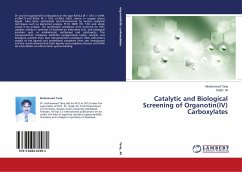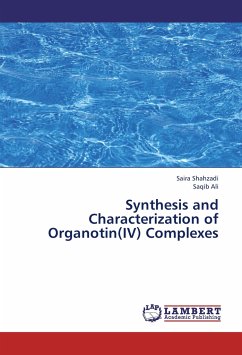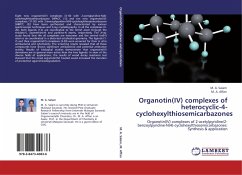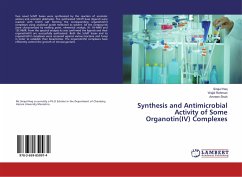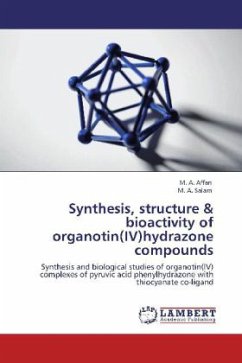Di- and tri-organotin(IV) carboxylates of the type R2SnL2 [R = CH3, n-C4H9, n-C8H17] and R3SnL [R = CH3, n-C4H9, C6H5, where L= oxygen donor ligand, have been synthesized and characterized by various analytical techniques such as elemental analysis, FT-IR, NMR (1H, 13C) and single crystal X-ray analysis. The synthesized complexes were screened for their catalytic activity in synthesis of biodiesel-an alternative fuel, and biological activities such as antibacterial, antifungal and cytotoxicity. The triorganotin(IV) complexes exhibited comparatively higher catalytic and biological activities than their diorganotin(IV) analogues. DNA interactions studies of the ligands and synthesized complexes were also investigated and the results showed that both ligands and complexes interact with DNA via intercalation as well as minor groove binding.
Bitte wählen Sie Ihr Anliegen aus.
Rechnungen
Retourenschein anfordern
Bestellstatus
Storno

